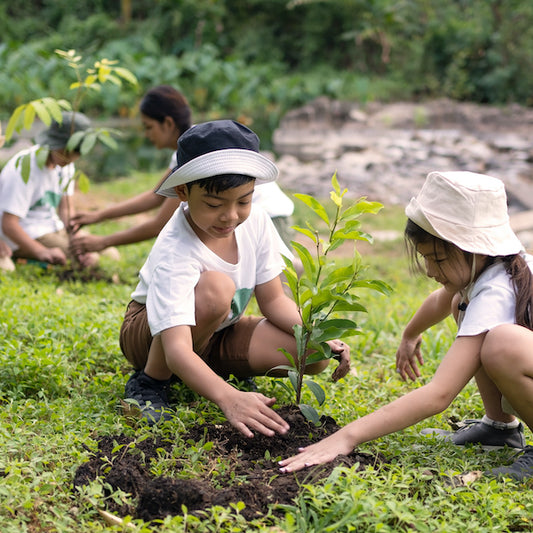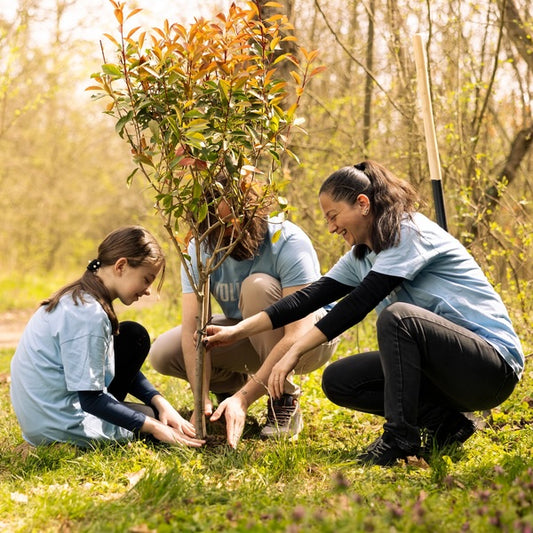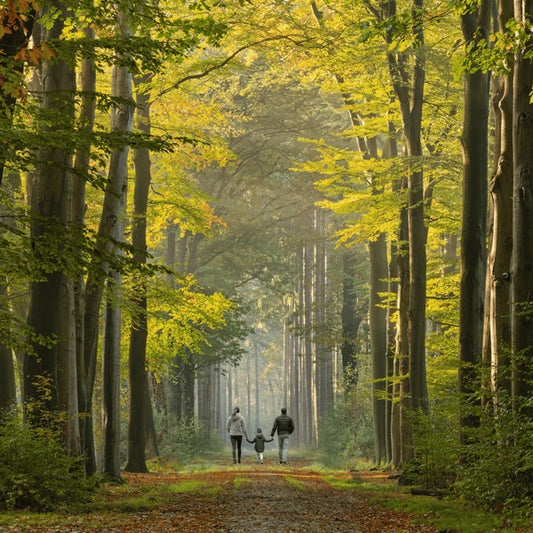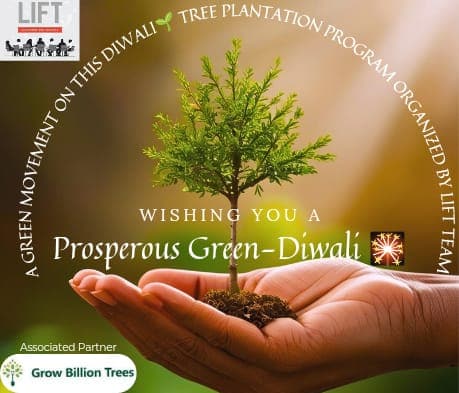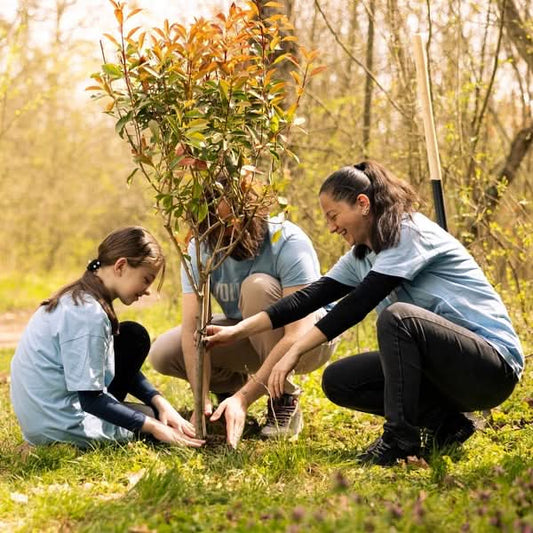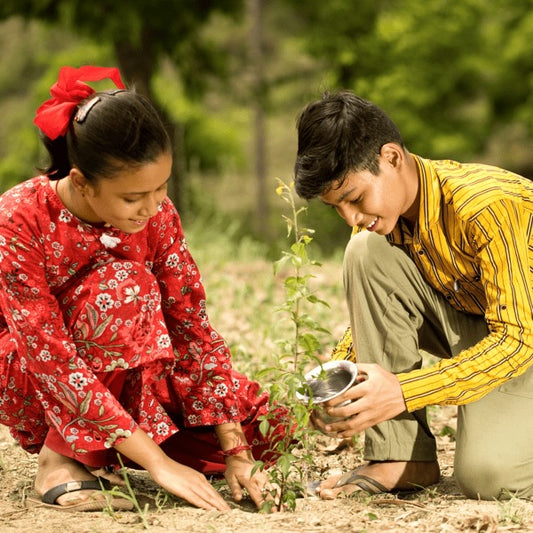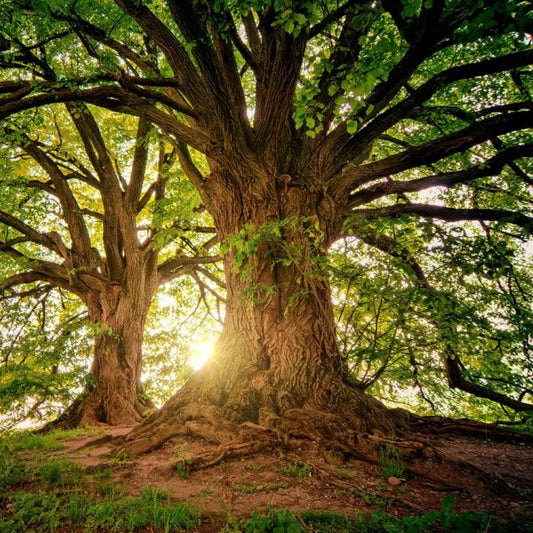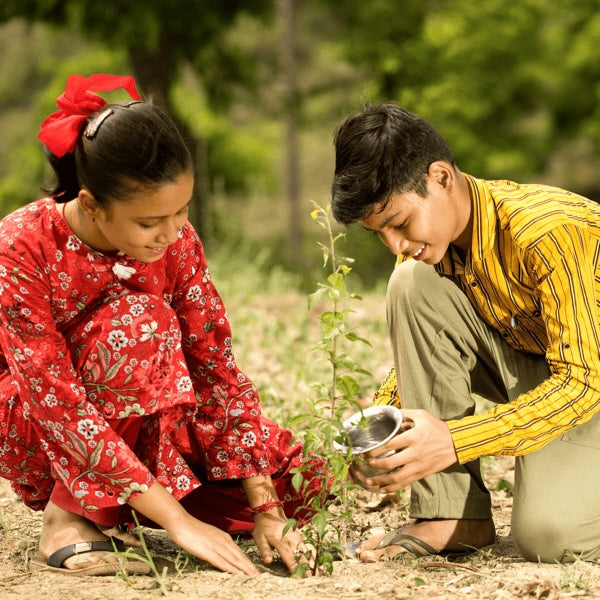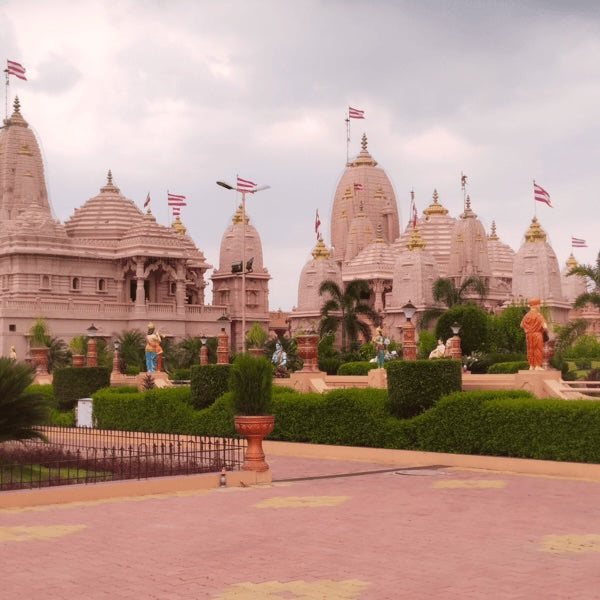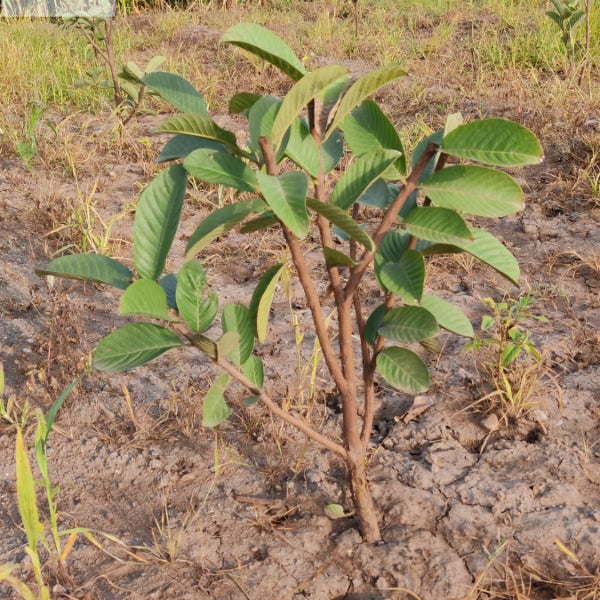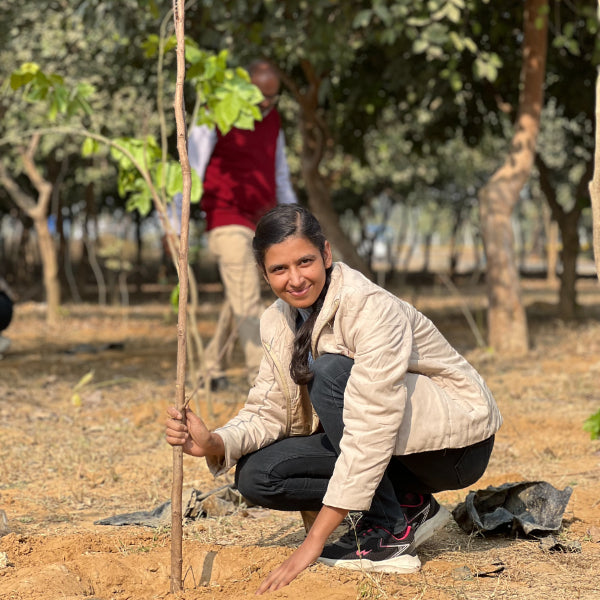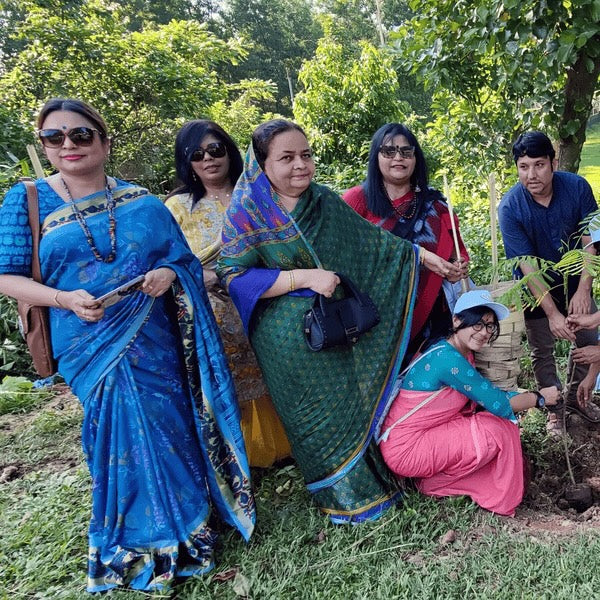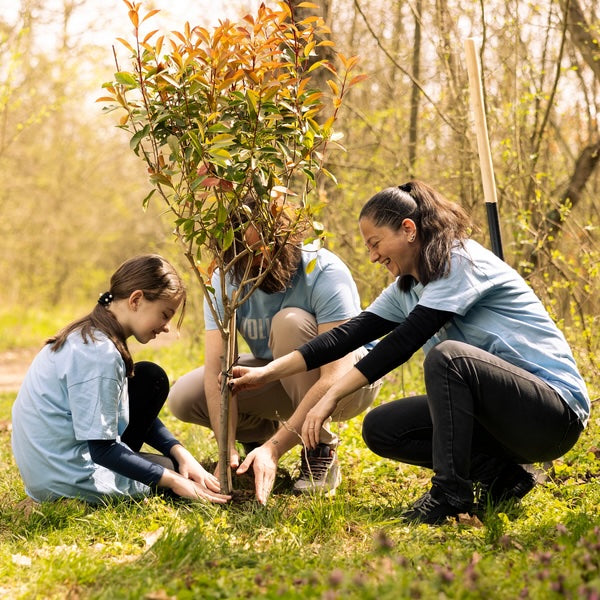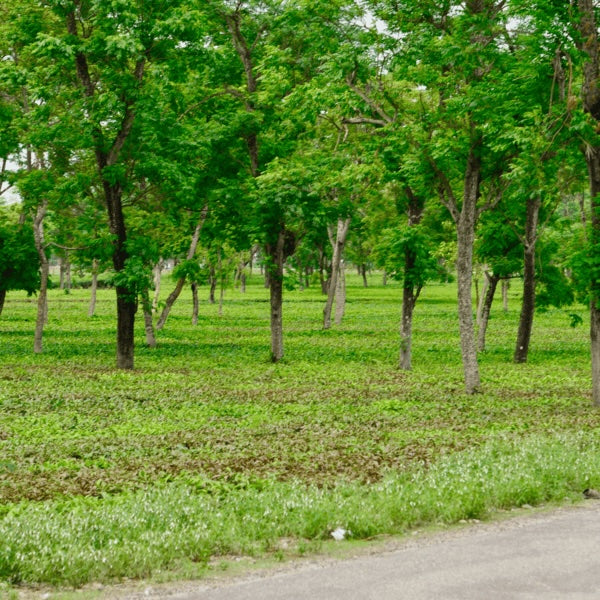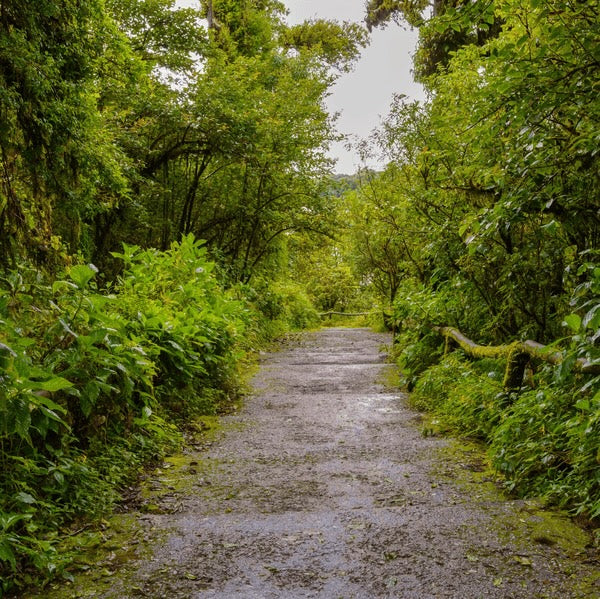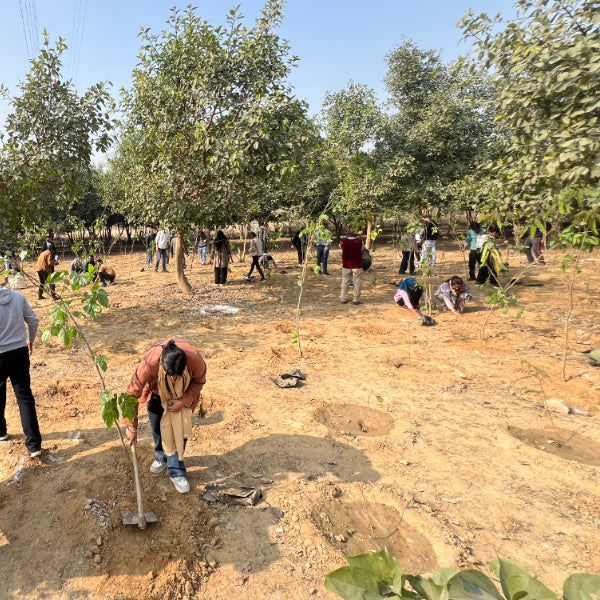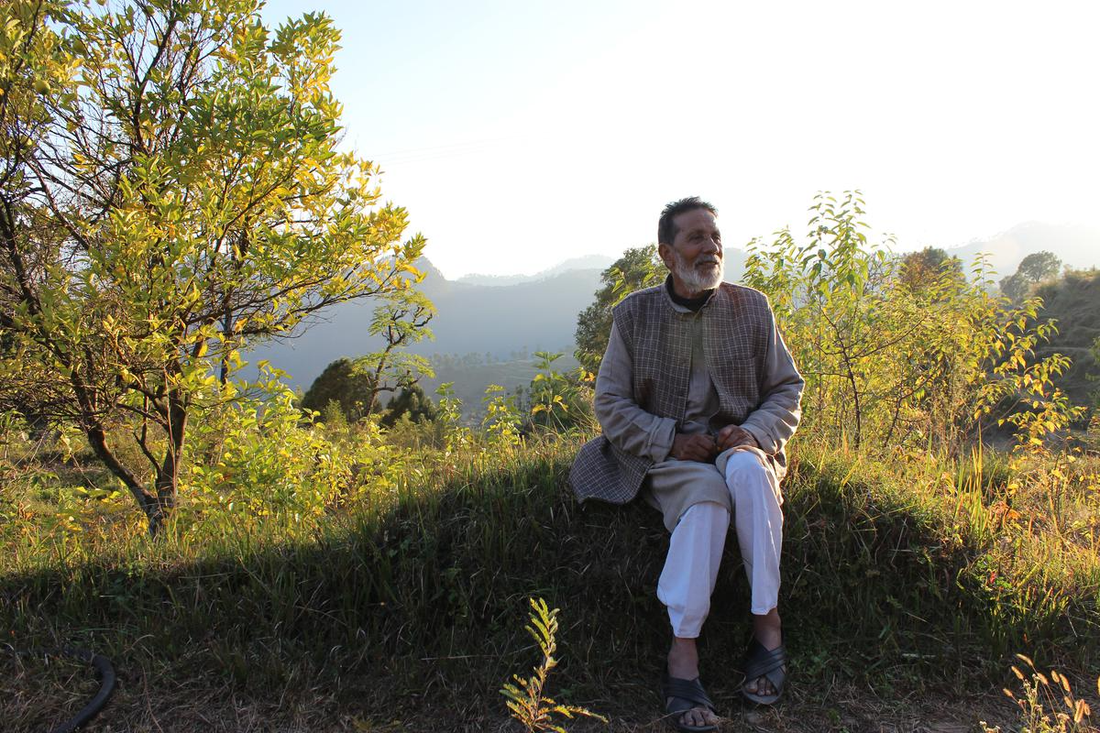

The Chandi Prasad Bhatt stands as a powerful symbol of environmental conservation, sustainability, and community-led action. Chandi Prasad Bhatt, a revered environmentalist and social activist, revolutionized India’s environmental consciousness with Read more
Trending
Trees for Corporates
Chandi Prasad Bhatt: Rooting the Chipko Spirit to Restore Forests and
The Chandi Prasad Bhatt stands as a powerful symbol of environmental conservation, sustainability, and community-led action.
Chandi Prasad Bhatt, a revered environmentalist and social activist, revolutionized India’s environmental consciousness with the Chipko Movement—a historic fight to save forests.
His lifelong commitment to afforestation and ecological balance is an inspiration for generations. The Chandi Prasad Bhatt Tree signifies his vision of trees as life-giving forces that protect humanity and the planet from ecological collapse.
Who is Chandi Prasad Bhatt?
Chandi Prasad Bhatt, born in 1934 in Uttarakhand, is one of the pioneering environmentalists of India. Founder of the Dasholi Gram Swarajya Sangh (DGSS), his grassroots activism transformed forest conservation efforts in India.
Bhatt played a key role in the Chipko Movement—a people’s movement in the 1970s where villagers embraced trees to stop deforestation.
For Bhatt, trees are more than plants; they are guardians of ecosystems, protectors of soil, and providers of life-sustaining resources. The Chandi Prasad Bhatt Tree reflects his message that every tree saved today secures a better tomorrow for people and the environment.
The Chipko Movement: Hugging Trees to Save Forests
The Chipko Movement, which began in the Garhwal Himalayas in 1973, was a direct response to rampant deforestation caused by commercial logging. Forests were being exploited for timber industries, threatening local livelihoods and destabilizing the fragile Himalayan ecosystem.
Under Bhatt’s leadership, villagers—mostly women—hugged trees to prevent their felling. This simple yet powerful act of defiance not only saved countless trees but also sparked a nationwide conversation on environmental conservation.
Fun Fact: Chipko means “to hug” in Hindi.
The Chipko Movement later inspired global environmental campaigns, proving that grassroots efforts can combat even the biggest ecological challenges.
Why is the Chandi Prasad Bhatt Tree Significant?
The Chandi Prasad Bhatt Tree represents:
- Ecological Restoration: Tree plantations combat deforestation, restore degraded land, and protect biodiversity.
- Water Conservation: Forests act as water reservoirs, regulating rainfall, preventing soil erosion, and recharging groundwater.
- Community Involvement: Bhatt’s work emphasized community participation in forest conservation, empowering locals to protect their natural resources.
- Climate Resilience: Trees absorb CO₂, mitigating the effects of climate change and regulating global temperatures.
Scientific Role of Trees in Sustainability
Trees are central to ecological health and combating climate change:
- Carbon Sequestration: Trees absorb up to 22 kg of CO₂ annually, reducing greenhouse gases in the atmosphere.
- Soil Stabilization: Roots prevent soil erosion, essential in mountainous regions like the Himalayas.
- Biodiversity Conservation: Forests are home to 80% of terrestrial species, offering habitats and food security.
- Water Regulation: Trees enhance rainfall infiltration, reducing runoff and improving groundwater recharge.
Chandi Prasad Bhatt’s Philosophy: Trees as a Lifeline
Bhatt emphasized that forests are vital for local communities, especially in mountainous regions where life depends on natural resources. His philosophy intertwined social justice with environmental sustainability.
According to Bhatt, a single tree protects soil, water, and air—life’s fundamental elements.
Fun Fact: Did you know the Himalayan forests store nearly 25% of India’s water resources? Cutting them accelerates water crises and climate instability.
Environmental Impact of the Chipko Movement
The Chipko Movement achieved several milestones under Bhatt’s leadership:
- Forest Preservation: The movement directly prevented deforestation in many regions of Uttarakhand.
- Policy Changes: The success of the Chipko Movement led to the Forest Conservation Act of 1980, restricting logging in ecologically sensitive areas.
- Community Awareness: It empowered rural communities, particularly women, to lead conservation efforts.
- Global Inspiration: Movements like Green Belt in Africa and anti-deforestation campaigns in the Amazon drew inspiration from Chipko’s philosophy.
Chandi Prasad Bhatt and Afforestation
Bhatt extended his vision beyond forest conservation to afforestation. He promoted the planting of native tree species that adapt to local climates, prevent soil erosion, and support biodiversity. Bhatt’s tree-planting campaigns emphasize sustainability over short-term commercial gains.
Why Native Trees Matter
- They require less water.
- They attract and sustain local wildlife.
- They restore natural ecosystems faster than exotic species.
- They survive longer with minimal care.
By championing native tree plantations, Bhatt ensured forests would thrive for generations.
Fun Fact: A single mature tree can produce enough oxygen for 4 people every day. Imagine the impact of planting a million trees!
Economic Benefits of the Chandi Prasad Bhatt Tree
Bhatt understood that trees are not just environmental assets—they’re economic lifelines for rural communities. Trees provide:
- Fruits and Nuts: Sustainable sources of food and income.
- Timber and Firewood: When managed responsibly, trees offer livelihoods without harming ecosystems.
- Medicinal Plants: Forests are a treasure trove of traditional medicines.
- Eco-Tourism Opportunities: Thriving forests attract tourists, boosting local economies.
Bhatt’s afforestation model ensured economic and environmental goals aligned perfectly.
Global Recognition for Chandi Prasad Bhatt
Bhatt’s work has been widely recognized for its profound impact:
- Ramon Magsaysay Award (1982): For community leadership and environmental conservation.
- Padma Bhushan (2005): For his contribution to forest preservation.
- Gandhi Peace Prize (2013): Honoring his non-violent fight for sustainable development.
Despite accolades, Bhatt remains humble, focusing on empowering communities to plant, protect, and preserve forests.
The Role of Trees in Combating Climate Change
Trees are humanity’s strongest ally in the fight against climate change. Scientific studies reveal that large-scale afforestation could absorb up to 25% of annual CO₂ emissions globally.
Bhatt’s advocacy for planting native trees aligns with this solution, offering immediate and long-term benefits.
Fun Fact: Forests cover about 31% of Earth’s land area but absorb roughly 40% of global carbon emissions annually.
How Communities Can Follow the Chandi Prasad Bhatt Tree Philosophy
Bhatt’s work teaches us that environmental conservation starts locally. Here’s how individuals and communities can join his mission:
- Plant Native Trees: Prioritize species suited to the local environment.
- Protect Existing Forests: Forest preservation is as important as afforestation.
- Promote Community Participation: Involve locals, especially women and youth, in conservation efforts.
- Adopt Traditional Practices: Use sustainable methods like agroforestry and water harvesting.
- Raise Awareness: Educate others on the role of trees in combating climate change.
The Future of the Chandi Prasad Bhatt Tree Movement
Bhatt’s legacy reminds us that every tree saved or planted contributes to a healthier planet. As climate change accelerates, his philosophy offers a simple yet powerful solution—protect nature, and nature will protect us.
The Chandi Prasad Bhatt Tree movement is a call to action for individuals, governments, and businesses to prioritize afforestation, sustainability, and community-led conservation.
Conclusion
The Chandi Prasad Bhatt Tree is not just about saving forests; it’s about planting hope, nurturing ecosystems, and securing our collective future.
Chandi Prasad Bhatt’s work through the Chipko Movement and afforestation campaigns highlights the vital role of trees in ecological balance, water security, and climate resilience.
By embracing the principles of the Chandi Prasad Bhatt Tree, we can tackle global challenges like deforestation, climate change, and biodiversity loss. It’s time to act—plant a tree, protect a forest, and honor the legacy of the man who proved that one hug can save a planet.
Every tree planted today is a promise for a better tomorrow. Let’s make that promise together.
You may also like
Corporate Plantations
Chandi Prasad Bhatt Environmentalist
Chandi Prasad Bhatt, the quiet revolutionary, sparked India’s green awakening with the Chipko Movement. His work proves that hugging trees isn’t just emotional—it’s ecological wisdom with a global impact.
Chipko Movement Legacy
“Hug a tree, save a life” was the mantra behind this 1970s movement led by Bhatt. By standing between axes and forests, villagers proved that grassroots activism can save ecosystems.
Community-Led Afforestation
Bhatt empowered rural communities to become environmental stewards. Planting trees wasn’t just about ecology; it restored livelihoods, water security, and the soul of villages struggling with deforestation.
Native Tree Plantations
Bhatt championed native tree species—adaptable, resilient, and biodiversity-friendly. Unlike exotic plants, native trees thrive in local soils, recharge groundwater, and provide food and shelter for wildlife.
Forest Preservation and Ecosystem Revival
For Bhatt, forests are living systems. Saving them ensures biodiversity thrives, rivers flow, and soil stays put. He connected forest health with human survival in the most poetic way.
Himalayan Forest Conservation
Bhatt’s focus on the fragile Himalayan ecosystem was groundbreaking. He understood that conserving these forests protected glaciers, rivers, and villages downstream—critical for India’s water security.
Soil Erosion Prevention
Trees are nature’s anchors, holding soil together during rains. Bhatt’s afforestation initiatives reduced erosion in mountainous regions, making agriculture and life sustainable for generations to come.
Women’s Role in Conservation
Bhatt highlighted the critical role of women in forest conservation. Women led Chipko protests, proving their deep connection to nature and their power as protectors of ecosystems.
Climate Change and Tree Planting
Trees are the ultimate weapon against global warming. Bhatt’s work taught us that every tree absorbs CO₂, cools the earth, and fights the heat crisis threatening our planet’s balance.
Sustainable Development and Forests
Bhatt’s philosophy links economic survival with ecological preservation. Planting trees and protecting forests aren’t obstacles to development—they are essential for long-term prosperity.
Water Conservation and Forests
Forests are natural sponges, storing rainwater and recharging groundwater. Bhatt’s afforestation work revived springs and rivers, creating a reliable water source for both nature and communities.
Chandi Prasad Bhatt’s Legacy
Bhatt’s tree-planting spirit continues to inspire global environmental movements. His work reminds us that trees are our lifelines, forests are our heritage, and protecting them is our collective duty.
FAQ
What is the Chandi Prasad Bhatt Tree?
The *Chandi Prasad Bhatt Tree* symbolizes his work in restoring forests, promoting afforestation, and empowering communities to protect nature, echoing the spirit of the historic Chipko Movement.
Who is Chandi Prasad Bhatt?
Chandi Prasad Bhatt is an environmentalist and the leader of the Chipko Movement. He inspired people to hug trees, saving forests and promoting sustainable living in harmony with nature.
What was the Chipko Movement?
The Chipko Movement was a 1970s environmental protest where villagers embraced trees to prevent deforestation. Led by Bhatt, it became a symbol of grassroots resistance to protect forests.
How does tree planting help fight climate change?
Trees absorb CO₂, cool the planet, and regulate rainfall. Bhatt’s initiatives proved that planting native trees can combat global warming and restore ecological balance effectively.
Why are native trees important in afforestation?
Native trees thrive naturally, need less maintenance, and support local ecosystems. Bhatt emphasized their role in restoring forests and ensuring biodiversity flourishes without disrupting nature.
How did Chandi Prasad Bhatt empower communities?
Bhatt engaged villagers, especially women, in afforestation and forest preservation, making them protectors of their environment and ensuring collective ownership of ecological solutions.
What impact did Chandi Prasad Bhatt have on forest conservation?
Bhatt’s leadership saved countless forests, prevented soil erosion, and revived rivers, creating sustainable ecosystems that benefit both nature and the rural communities dependent on them.
Why is soil erosion prevention critical in Bhatt’s work?
Forest loss causes soil erosion, impacting agriculture and water systems. Bhatt’s afforestation campaigns stabilized soil, reduced runoff, and ensured long-term sustainability for mountain regions.
What role did women play in the Chipko Movement?
Women were at the forefront of the Chipko protests, hugging trees to protect their forests. Bhatt recognized their leadership as key to the success of conservation efforts.
How did Chandi Prasad Bhatt connect forests to sustainable development?
Bhatt showed that protecting forests supports livelihoods, preserves ecosystems, and ensures long-term development by balancing economic needs with environmental care.
How do forests help in water conservation?
Forests act as natural water reservoirs, allowing rainwater to seep into the ground and recharge aquifers. Bhatt’s work revived rivers and springs through afforestation and forest protection.
What is Chandi Prasad Bhatt’s legacy today?
Bhatt’s legacy lives on as an inspiration for afforestation, sustainable development, and grassroots environmental movements, proving that saving trees can save our planet’s future.
Most Popular
Connect with us
-
👥 Corporates
If you are looking for:
- 🌲 Tree Plantation Events
- 📊 CSR Projects
📧 corporate@growbilliontrees.com
📞 +91 9699723523
💬 +91 9325931304 WhatsApp (Only)
🕒 Mon - Sat | 10am - 7pm IST
-
🧩 Tree Plantation NGOs
If you are looking for:
- 💰 Financial Assistance
- 🤝 Operational Support
📧 support@growbilliontrees.com
📞 +91 9699723523
💬 +91 9325931304 WhatsApp (Only)
🕒 Mon - Sat | 10am - 7pm IST
-
🌼 Individuals
If you are looking for:
- 👥 Group Tree Plantation Drive
- 🌳 Bulk Tree Plantation
📞 +91 9699723523
💬 +91 9325931304 WhatsApp (Only)
🕒 Mon - Sat | 10am - 7pm IST

